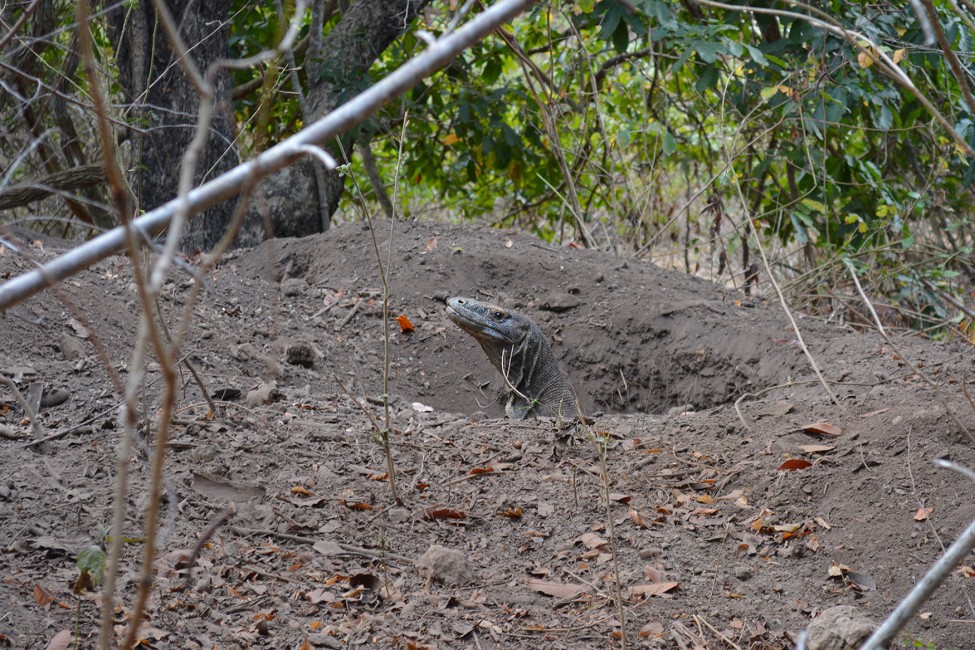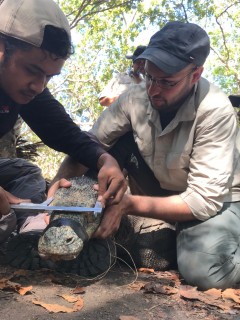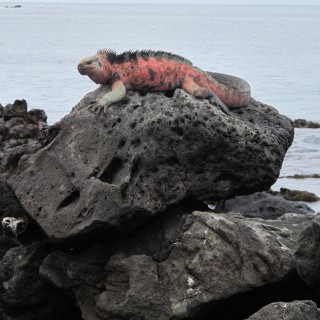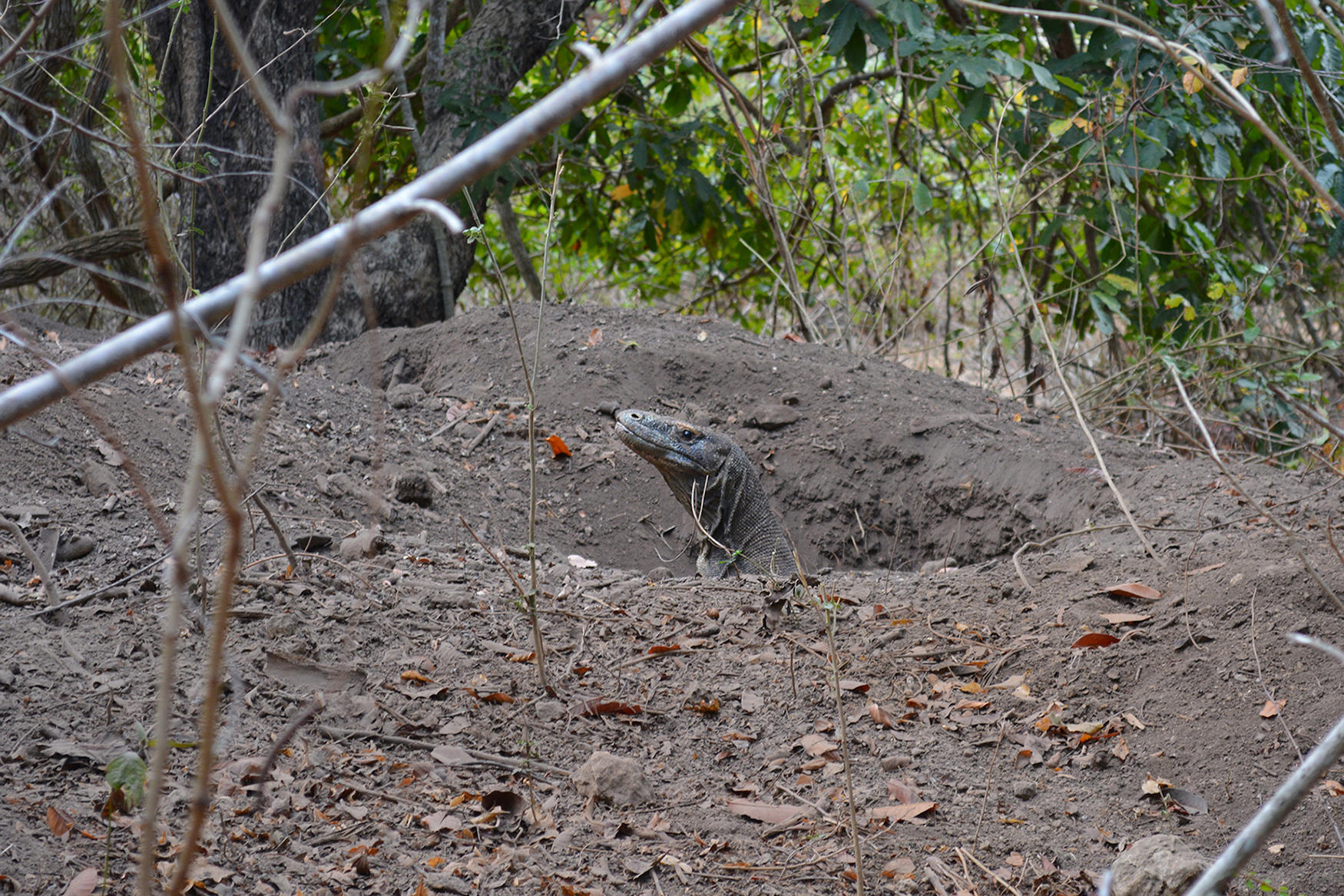
December 18, 2018
A Zookeeper on Dragon Turf – Part 1
- as seen by -
 Avishai Shuter
Avishai Shuter
“Do you want to go to Komodo?”, Don Boyer, the Bronx Zoo’s Curator of Herpetology, asked me in early 2018.
Since WCS’s Bronx Zoo Komodo dragon exhibit opened to the public in 2014, I’ve always wondered how accurately it represented the feel of the species’ natural habitat. Now, I would have the opportunity to find out for myself. The trip would be made up of 11 days of field research in Indonesia.
Komodo dragons (Varanus komodoensis), the world’s largest lizard species, are native to several Indonesian islands that form Komodo National Park. And although Komodo dragons occur on a number of islands, only one of them is called Komodo Island. My travels would take me to Rinca Island, east of Komodo. There, I would meet up with researchers that work for the Komodo Survival Program (KSP), an Indonesian NGO working to preserve wild Komodo dragon populations.
After over 30 hours of flying to get to and around Indonesia, I finally landed in Labuan Bajo on Flores. There, I met the KSP team, led by Achmad Ariefiandy and Deni Purwandana. Their research team performs surveys throughout the year on various islands to track the different dragon populations. The surveys involve catching and releasing dragons traversing the wilderness in traps, by hand, or on camera traps, and recording measurements including head width, weight, and total length.
The KSP team knows the identities of thousands of wild Komodo dragons based on microchips they’ve implanted. They are able to track approximate ages and growth rates of specific animals over years of study. Some of these animals were given their microchips when the first surveys began about 15 years ago. The team has watched some of the wild dragons grow from diminutive youngsters into massive adults, producing the best ecological data ever collected for this iconic species.
We set off for Rinca via a two-hour boat ride. We passed many small specks of land on the way to our destination and finally made landfall at Loh Buaya, “Crocodile Bay.” The minute the boat was unloaded, we took off for the field to find the dragons.
EDITOR’S NOTE: Read Part 2 here.
Nikon




Leave a Comment